- Home
- William Shatner
Up Till Now Page 20
Up Till Now Read online
Page 20
I got to ride quite a bit in the television movie North Beach and Rawhide, which ended with a rodeo. I played Rawhide, an ex-con who runs a correctional ranch for wayward kids, believing that working with horses could have great therapeutic value for them. By the time I did this film I was already involved with the Junior Justice Correction Program, but hadn’t yet discovered Ahead with Horses. In the seventh Star Trek feature film, Star Trek: Generations, I had a scene in which I’m riding with Patrick Stewart. In that film I rode a horse that I’d bred on my horse ranch in central California.
I can just imagine if my father had lived and was reading that last sentence: Billy has a horse ranch? My Billy? What does he call it, the Bar Mitzvah?
Patrick Stewart had very little experience on horseback so I worked with him. I remember the best single bit of advice I ever gave him: Patrick, you should wear pantyhose under your pants because it will reduce the chafing.
As I’ve learned several times, horseback riding can be dangerous. You don’t ride a horse a lot without falling off. I remember how awful I felt when Chris Reeve broke his neck. I knew Chris vaguely, and several months after his accident I went to visit him. As I walked through the glass doors of the hospital in New Jersey I saw him sitting in his wheelchair, breathing with the assistance of a machine, and I thought, what am I possibly going to say to him? I sat down beside him and within minutes we were talking about horses. Horses on the bit, off the bit, all we talked about was horses. He loved them as much as I did.
But for months after that visit every time I got on a horse I thought, is this it? Is this the day I fall off a horse and break my neck? I was just luckier than he was. In 1975 we were shooting the first episode of a series that eventually became known as Barbary Coast, although at that point it was called Cash & Cable. The series was a combination of Wild Wild West, Mission: Impossible, I Spy, and just about every other period detective show ever done. I was Cable. The gimmick was that each week I would have to wear some elaborate disguise. For this episode, though, I was dressed as a cowboy. The first day of filming, the very first day, we were doing a simple stunt, a horse falling. I decided to do it myself. I won’t volunteer to do a stunt if it’s unnecessary or dangerous—I’m not going to fall off a building in a long shot in which no one can see my face. But if the camera is going to be close enough for the audience to recognize me, I want to do it.
Falling off a horse is not a particularly dangerous stunt. To do it, they dig a soft pit to fall into. When you give the horse its cue, yanking his head around, he’s trained to fall flat. The key is to get your leg out from under the horse. You do this stunt with your feet out of the stirrups; the ground is soft and as long as you let yourself relax you’ll get away from the horse.
I had never done a falling horse gag before—but I’d seen it done many times. What could go wrong? “This is where you fall,” the director told me as we worked out the shot. “When you fall, roll into here. The cameras are gonna be right on your face as you roll in, so we’ll get it all in one.” Then he had the crew water down the pit to get rid of the dust and soften it for my fall. “Ready, Bill?”
Action. I got the horse running, I yanked the reins, the horse falls. Perfect. And I almost get out of the way. Part of my shin was caught under the horse. The horse struggled to get up, but couldn’t, and it was lying on my leg. And I can’t get my leg out from underneath. It felt like it was broken.
As it turned out, the dirt in the pit was actually clay; they had watered the clay and it was hardening. The horse kept rolling on my leg. Finally the horse got up. I was shaking with pain, but I was determined to complete the scene. I wasn’t going to go through all that and not get it done. So I said my lines. Then, cut! “Bill, are you okay?”
“No. I think I’m dying.” My foot was swelling rapidly. My boot had to be cut off. They rushed me to the Emergency Room of a large downtown hospital. I was lying on a gurney in this urban hospital, all around me were victims of shootings and stabbings, cops were walking around. People were moaning and screaming, crying. It was as if I’d been dropped into a scene out of a Tyrone Guthrie–directed Greek tragedy in downtown Los Angeles. I was lying there on a stretcher, dressed in my cowboy costume, my face covered with my full pancake makeup—and nobody even noticed. I was the most normal-looking person there. Actually, I suppose, it could have been a lot worse. Later in the episode we were filming I was costumed as a member of the Ku Klux Klan.
The producers were incredibly concerned. They saw me lying in pain and said with great sympathy, “When do you think you can get back to work?” The doctor put an air cast on my leg. Two days later I was back at work. Limping, but working.
People always tell you when you have an accident while doing something that the best thing to do is try it again as quickly as possible. It’s like falling off a horse, they explain, you have to get right back on the horse. In this case I had fallen off a horse, which completely ruined that metaphor. But I did get right back on, and through the years I’ve fallen off several times.
Years later, for example, I had been invited to sing five songs nominated for Song of the Year on the very first MTV Movie Awards show. I was scheduled to go into the studio the afternoon before the show. That morning I was out riding with my close friend Danny Giradi at his facility. I was on a young horse, a three-year-old, that was a little skittish. “You know, Bill,” he told me. “The type of horse you’re on is very sensitive. If you put your hand on their kidney area, their hip area, they’re really sensitive.”
That was interesting. I reached back, “You mean like this?” Apparently that’s precisely what he meant. The horse bucked, throwing me into the air. I was out cold for more than a half hour. When I came to I asked the woman who was helping me, “What happened?”
“Well, you got knocked out by the three-year-old.” “Oh. Well, what happened?” “You got knocked out by the three-year-old.”
It was like I was walking slowly out of a deep haze, I couldn’t process the information. “Really? So what happened?”
Eventually I was taken to a doctor who decided I was all right. But then I remembered I had to record my five songs. I was still covered with dirt and manure and dust but we went to the studio. Knowing that I intended to speak the lyrics, I told MTV I needed some instruments to carry the melody. MTV had provided a xylophone and bongos. That was my accompaniment. “What’s my first song?” I asked the lovely woman from MTV.
She said, “I Want to Sex You Up.”
Rapidly I came out of my fog. “What’s the first song?” “I Want to Sex You Up.”
As I discovered, the lyrics were very simple: “I want to sex you up, I want to sex you up. Sex you up, sex you up, I want to sex you up.” Oh perfect, I thought, a love song. With bongos.
It actually was a very funny show. For example, the first MTV Movie Award given for Best Inanimate Object went, I believe, to Vanilla Ice, who just beat out the wallpaper from Barton Fink. So naturally my performance was duly appreciated.
I got to ride almost weekly when we were filming Barbary Coast in 1975. This was the first series I’d done since Star Trek, the original version and the animated version. I played a special investigator, a master of disguise, working for the governor of California on San Francisco’s lawless Barbary Coast in the 1870s. My partner, played initially by Dennis Cole, who was replaced by Doug McClure, owned the local casino. I can’t begin to imagine the number of different costumes I’ve worn in my career. I know it sounds glamorous and even romantic; wow! My job was dressing up as a pirate or a lawyer or a cowboy. But this was television, not motion pictures. We didn’t have the luxury of new costumes. We had to use whatever was hanging in the wardrobe department—and some of those costumes had been hanging there for years. So in reality I was putting on old clothes that didn’t fit and were full of lice, wigs that smelled awful and itched, and shoes that were always too small or too large and caused blisters.
In our two-hour pilot film I worked undercov
er as a one-eyed pirate and a blind beggar, a well-suited bank examiner and a Ku Klux Klan member, a priest and a Chinese man.
Working on this show made me appreciate the beauty of Spock’s ears. Each morning we began with the wardrobe person going through racks of clothes until he found exactly what he wanted; at the same time a makeup man was inventing my makeup. When my makeup was on and I was in costume I’d look into the mirror and get into character. It took about three hours to do the costume, makeup, and preparation. As soon as I got done the assistant director notified the director, “Shatner’s ready.” They would stop whatever they were doing and move to my next location and get set up. We’d shoot my scene, then cut!
Baaaaaack I went upstairs while they returned to whatever they were shooting. It would take me about an hour to get out of my makeup. My face got raw from peeling off rubber. Then the wardrobe man came back to create my next costume and the makeup man went back to work. Three more hours, shoot my scenes in that character, back upstairs. We did that at least twice every day.
Having the lead in a series is the hardest work in show business. It’s physically debilitating, backbreaking, marriage-wrecking, mind-blowing work. It’s fourteen to eighteen hours a day on the set, and then when you’re done working you begin doing the publicity necessary to promote it.
ABC was extremely enthusiastic about the series. We were stealing concepts from several of the most popular series on TV. They hung large signs all around the lot, WELCOME TO BARBARY COAST. They spent money decorating the sets. When we began shooting we would have 130 extras crowding the saloon, a piano player and a banjo player in the background, and in the street we had a dozen horses tied to hitching posts. That went on for about six weeks, until our first show was broadcast.
We got poor notices and our ratings weren’t very good. The next week I noticed that there were only a hundred people in the bar, the banjo player was gone, and there were eight horses hitched in the street. Our ratings went down again the following week; there were seventy people in the bar and the piano player had been replaced by a player piano. There were four horses in the street and I was doing only one costume change a day. We knew we were in serious trouble when the signs started coming down. Each week the cast got a little smaller, until we were down to ten people standing in a corner of the bar, a drunk was singing in the background, and the hitching post had been removed. I put on one costume Monday morning and wore it for the entire episode. I wouldn’t even bother putting on makeup, they just pasted a mustache on my face. We were canceled after thirteen weeks and I was thrilled about it. I had done fifty different characters in thirteen weeks. When the series was canceled I could finally get back to doing what I did best, worrying about getting the next job.
SEVEN
Now, I know that a true autobiography is supposed to reveal to the reader those signifi-cant events from which the subject learned the important lessons that impacted his or her life. The takeaway lessons for the reader. Lessons far more important than “Don’t take Esperanto as your second language in high school.” And so I am very happy to be able to do so.
I have learned some very valuable lessons in my life, lessons that are indeed worth sharing. For example, at one point I was invited to participate in a televised poker tournament, The World Poker Tour, which was being taped at Trump’s Taj Mahal Hotel & Casino in Atlantic City. I had never played competitive poker, truthfully I’d never quite understood what it was all about, so I agreed to do it.
I knew the basic rules of the game: twos, three of a kind, full house, straights, flushes—that I knew, but that isn’t playing poker. The true game of poker is a psychological contest, in which the weapon is bluffing and bidding. It is the delicate art of drawing your opponent into your net, or scaring him out of the game. It is the actor’s game, where the ability to create an image is more important than the cards at play. That was the aspect of this tournament that really intrigued me.
They gave me a $5,000 stake and three professional poker players spent several hours teaching me how to play competitive poker on television. This event was going to last three days, they explained, and we want you to stay in the game as long as possible. So don’t say very much because you’ll give yourself away, watch the table to see who is bidding what and try to see patterns, and bet conservatively. Always bet conservatively. I repeated their advice; keep my mouth shut, watch who’s betting what, and don’t bet too much on one hand. I have never been a very skilled or lucky gambler. My objective was to last at least one full day; if I was careful, I thought, I might last two days before I was eliminated.
I began to play at a table of ten people. I did as I had been taught, kept my mouth shut, watched the table, and bet conservatively. I won a pot, maybe two of them. I was beginning to understand that any hand was only as good as the player who drew it. As I settled in there was one player who got my attention, a real loudmouth sitting to my left. What an ass, I thought. He was a fat, ugly, absurd man who obviously wasn’t a very good player because he wasn’t following the rules I’d been taught by my professionals.
Finally I drew a strong hand, a pair of kings. At first I bet very carefully, reluctantly even, trying to sucker other players into the pot. I was very careful not to bet too much too quickly, but gradually I began raising it. The fat-ass guy keeps seeing me and I realized, I got him. I got him! And I’m holding a pair of kings. He knew it too, he kept sighing and shaking his head and complaining, “Oh yeah, I bet you got me beat. I just know you got something under there.” I knew he was testing me, but I smiled enigmatically and said nothing.
Finally only the two of us were left and a large pile of chips was sitting in the middle of the table. I stared at the pile. I had a pair of kings. I could double my money in one game, which would certainly be enough to keep me in the game till the second day. I had followed the rules and it had worked out well for me. But this was the time to express my personality, to demonstrate that I could play this game, to be bold. “Okay,” I said, looking right into the eyes of fat ass, “I’m all in.”
He let out a long, deflated breath, knowing he had no choice. But he was in too deep to fold. He shook his head, then reluctantly pushed all his chips to the center of the table.
The dealer turned over the last card, which to poker experts like myself is known as the last card. It was an ace. I’ve got a pair of kings, an ace doesn’t do me any good. But I had a pair of kings. It was time to reveal our cards. I had a pair of kings.
And he had a pair of aces. He’d had nothing until the last card. He’d bet everything on the luck of the draw. That’s why, as I discovered, he was the reigning world champion poker player, the top money winner on the circuit the previous year, and I was the eliminated-inthe-first-hour guy. I couldn’t believe it; I said to my instructors, “I followed all the rules and he didn’t follow any of them. He talked incessantly, he didn’t pay attention to what was going on, and he bet everything on a single card. He played like an idiot, I played like the pro—and I’m the one who’s eliminated in an hour.”
And so I had demonstrated two of the most important lessons which have made all the difference in my life: you can’t win the jackpot if you’re not in the game. And sometimes you just have to be lucky. Life is chaotic, chance plays a central role in everyone’s life. Nobody knows how any decision you make is going to turn out. My career strategy had become just say yes to almost anything.
Want to make a record album? Yes. Want to appear on this quiz show? Yes. Want to star in White Comanche? Okay, sometimes decisions are not going to work out as well as you’d like. But you don’t know when you make that decision. I remember someone asking me once, “Don’t you worry about overexposure?”
To which I’d responded honestly, “Not as much as I worry about paying the mortgage.”
Like our universe itself, Star Trek continued to expand throughout the television world, growing more popular and successful each year. With that success came recognition for the cast, but e
specially for myself and Leonard. For some reason I became strongly associated with real science and technology. Producers began hiring me to host specials, documentaries, and limited-episode nonfiction series about science and technology. I was even hired to do one of the very first commercials for a personal computer. It was strange. I’d played numerous doctors but no one expected me to give medical advice; I’d been a prosecutor and a defense attorney numerous times but no one asked me for legal advice; I’d been a homicidal maniac several times but no one ever confused me with a professional criminal. Yet for some reason I had become television’s go-to host for anything to do with science or technology.
It had little to do with reality. As a student in Montreal I’d shown very little aptitude for those subjects. They just hadn’t interested me. But even before I was hired by Gene Roddenberry I’d discovered the great science-fiction writers; I’d gone from reading the pulp magazines to all the great novels. And then I’d actually gotten to know several of these people, writers like Isaac Asimov and Theodore Sturgeon, while we were making Star Trek. I certainly understood why people would associate me with these subjects, but I also believed that on some level of the public’s imagination it was not Shatner the actor hosting these shows, who most certainly would be an expert in all of these areas, it was Captain James T. Kirk.
So it was quite natural that, for example, when home computers first became available to the public, I would be hired as the spokesperson. At that time I was one of the very few people in the world who had any practical knowledge about computers, having worked with the plywood and cardboard props aboard the Enterprise for three seasons. “Why buy just a video game from Atari?” I asked viewers in what may be the first TV commercial ever done for a computer. “Invest in the wonderful computer of the 1980s for only three hundred dollars. The Commodore Vic-20. Unlike games it has a real computer keyboard. With the Commodore Vic-20 the whole family can learn computing at home—plays great games too! Under three hundred dollars, the wonder computer of the 1980s. The Commodore Vic-20!”

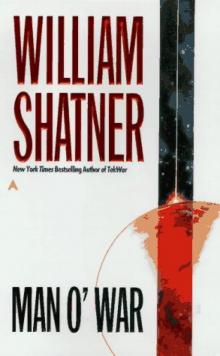 Man O' War
Man O' War Shatner Rules
Shatner Rules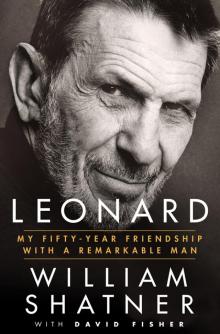 Leonard
Leonard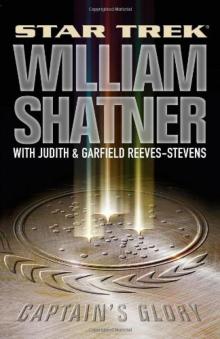 Captain's Glory
Captain's Glory Captain's Glory зпвш-9
Captain's Glory зпвш-9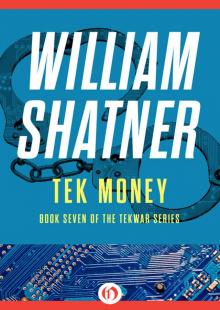 Tek Money
Tek Money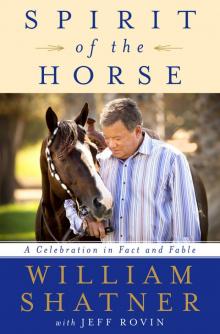 Spirit of the Horse
Spirit of the Horse Tek Vengeance
Tek Vengeance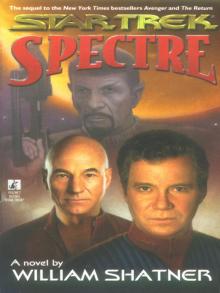 Spectre
Spectre Zero-G
Zero-G Tek Kill
Tek Kill Collision Course
Collision Course TekLab
TekLab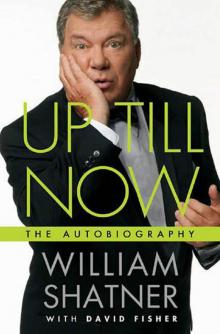 Up Till Now
Up Till Now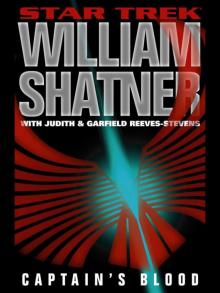 Captain's Blood
Captain's Blood TekWar
TekWar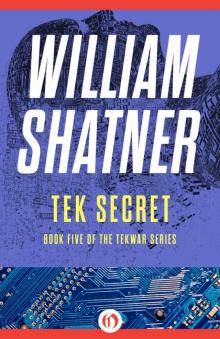 Tek Secret
Tek Secret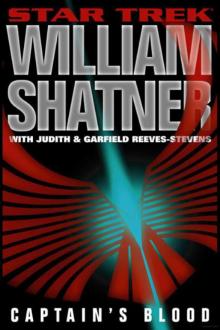 Captain's Blood зпвш-8
Captain's Blood зпвш-8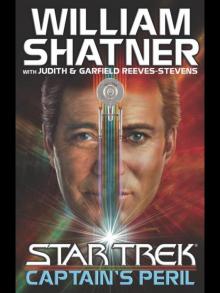 Captain's Peril
Captain's Peril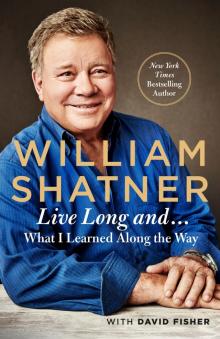 Live Long and . . .
Live Long and . . .